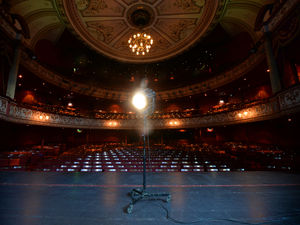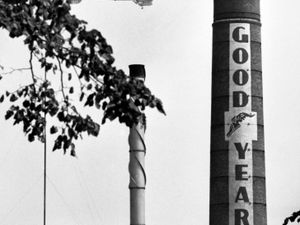Key road through Wolverhampton city centre is now 200 years old
One of the best-known thoroughfares in Wolverhampton is 200 years old. Roger Poole looks back at its story.
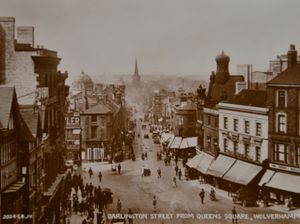
It had been seven years in the planning.
The town commissioners decided in 1814 that "the new street from High Green (Queen Square) to the bottom of Salop Street will be highly beneficial".
Coaches from the centre of Wolverhampton, heading west via Chapel Ash village, had to take a circuitous route along Cock Street (later Victoria Street), turning right into Salop Street.
Only when Darlington Street was completed in 1821 was there a direct route.
The land for the new road ran belonged to William Harry Vane, who sold it to the town for £350 per acre.
As Vane was the third Earl of Darlington, the road was named after him. As a great-grandson of Charles II and his mistress Barbara Palmer, 1st Duchess of Cleveland, he gained the titles Baron Raby of Raby Castle and Duke of Cleveland in 1833. So, Wolverhampton has Vane Street, Raby Street and Cleveland Street. Bath Road, too, since he had acquired the estate of the Countess of Bath when she died intestate in 1808.
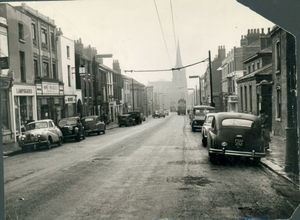
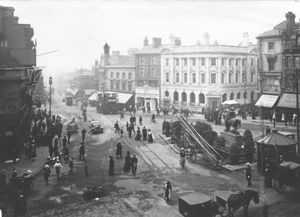
Landowner, politician and also the Lord Lieutenant of Durham, William Harry Vane was suitable for a street name. But we might be less willing to honour him today. For one thing, he owned 233 slaves in Barbados. And when Britain ended its involvement in the slave trade, he was paid compensation of £4,854 – more than half a million pounds in today’s money.
Also, many of us would frown on his idea of recreation: he would ride out six days a week in the hunting season. In the 1804-5 season alone he killed 49 foxes in 91 days.
A direct highway from the town centre to Chapel Ash was desirable because that way lay Holyhead and the sea-crossing to Ireland.
Within a period of nine days in August 1821, while their coach horses were changed, High Green’s Swan Inn accommodated notables including Lord Tyrawley, General Sir John Doyle, the Marquis of Winchester, Prince Paul and Princess Maria Theresia Esterhazy of Hungary and Austrian Chancellor Prince Metternich – all en route to or from Ireland.
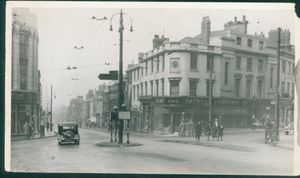
Darlington Street was part of a town improvement process that had begun with High Green being decluttered in 1778. Two buildings – a charity school and a 1532 Town Hall – were demolished. The population having reached around 19,000 there was a need for the town to modernise and improve the layout of streets.
The new route to the west via Chapel Ash was part of this, though the quality of the road surface probably left much to be desired. Two years after its opening, an order was placed for 2,000 tons of cinder to spread over it. On a rainy day, it must have been a traveller’s nightmare.
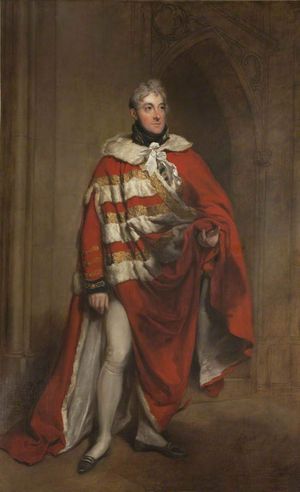
Also in 1821 the recently-formed Wolverhampton Gas Light Company began providing the town with gaslight. A new edifice appeared on the site of the old market cross in High Green – a gas lantern set atop a forty foot high pillar.
The column was probably inspired by the ideas of gas-lighting pioneer Frederick Accum, a director of the Gas Light and Coke Company that had been set up in 1810. But it was not popular with Wolverhampton folk, partly because it was hardly a thing of beauty and was mockingly referred to as a great “candlestick”, partly because, the lantern being so far from the ground, failed to disseminate much light, and partly because it became (as a letters page contributor to the Wolverhampton Chronicle wrote in August 1826) “a lounging place for the most notoriously vicious and dissolute characters of both sexes”.
The problem was the cost of dismantling it. Seven wealthy Wulfrunians had borne the cost of its erection, but one could hardly invite them to pay for its demolition. So, the lofty eyesore stayed where it was for almost twenty years being finally pulled down.
Out of darkness light may well cometh. But that particular light could not goeth too soon for most people.


